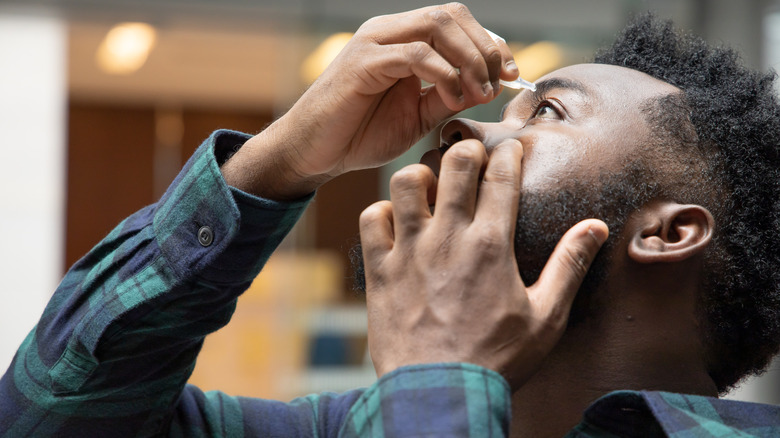What Are The Risk Factors For Glaucoma?
Glaucoma is a progressive eye disease caused by an injury to the optic nerve — the main connection between the eyes and the brain, according to Mayo Clinic. The optic nerve is critical to vision and any damage to it can result in permanent vision loss. Centers for Disease Control and Prevention statistics show that glaucoma is among the top three leading causes of blindness in the United States, with more than 3 million of the population experiencing the disease.
According to the National Health System (NHS), many people don't even realize they have glaucoma until it's too late. That's because it doesn't show any prominent symptoms in the beginning. Since it often occurs after age 60, blurry eyesight is dismissed as an age factor. Other common signs include headaches, dizziness, nausea, dilated pupils, and sore, reddish eyes (via Healthline).
However, experts believe that early detection is possible by monitoring eye pressure periodically to delay the risk of blindness. Glaucoma is often — not always — caused by ocular hypertension or intraocular pressure, a condition that increases internal eye pressure (via WebMD). When noticed at an early stage, doctors can further examine fluid drainage in both eyes and the injury to the optic nerve to confirm if it is indeed glaucoma. This could help prevent permanent vision loss.
What causes glaucoma?
The primary risk factor for glaucoma is age. But according to a 2019 study published in BMC Public Health, other factors such as biological sex, and eye injury play a role as well. In fact, compared to males aged 50 and older, the eye disease was a whopping 19% higher in females of the same age group and researchers suggest hormones could be at play. A 2010 review published in Current Opinions in Ophthalmology stated that lower levels of estrogen during menopausal years could be a contributor to higher glaucoma.
Luckily, glaucoma is a treatable eye disease and numerous treatments are available to delay the vision loss process or simply eliminate the risk at an early stage. What's crucial is to go for regular eye check-ups, especially for those over 60 or with a family history of the disease. This can help ensure you protect your vision for as long as possible.


